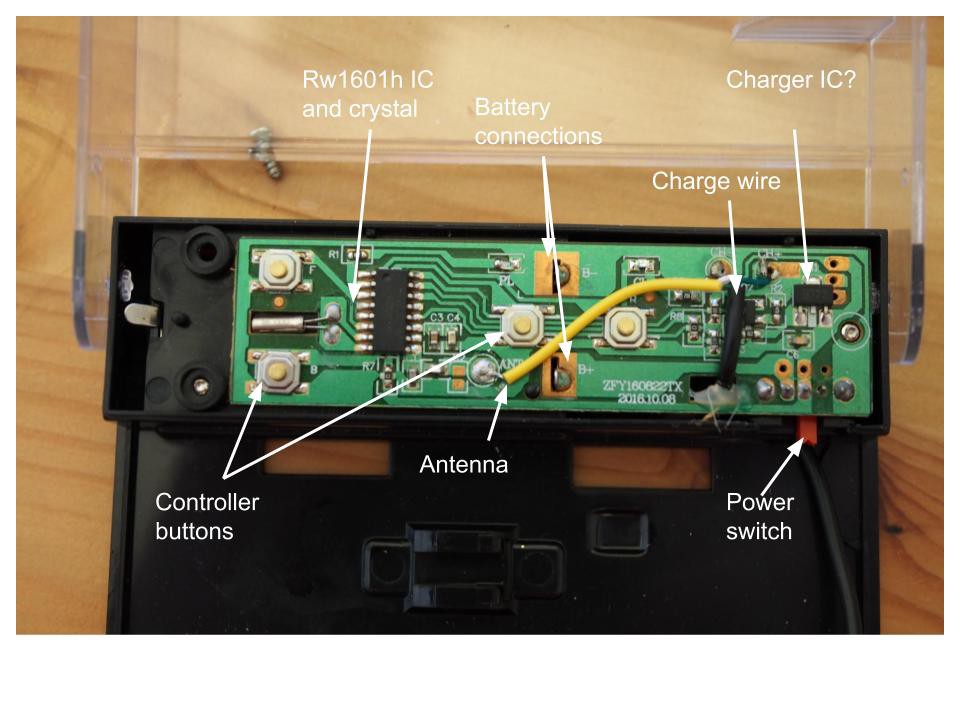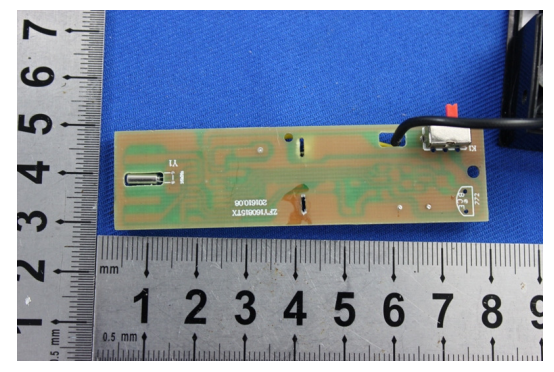It was brought up in the comments that what I recognized as a supercapacitor is likely a 1/3 AA size NiMH battery cell. This actually would make a lot of sense. A supercapacitor discharges in a way that the voltage will drop significantly before the energy is depleted, and I did not notice a significant slowdown in driving speed until the car is mostly discharged. In addition, the car can run for quite some time before needing a recharge, and a supercapacitor likely does not have enough capacity. However, I did not see any charging electronics on the car’s PCB, which made me think it might be a supercapacitor instead of a battery, since they can be charged in a much simpler way. That said, the car charges from the controller, and the charging electronics could be there. Or, since this device is so cheap and not expected to last long, possibly they are just doing some CV charging of the cell. I'm not very familiar with NiMH cells, but maybe someone else can chime in if such a setup is reasonable for a low cost device. I also previously said the system is charged from a AA battery, but actually the controller uses 2 AAA alkaline batteries.
The below image shows the top of the controller PCB. A number of components carry over from the car's PCB: the rw1601h and crystal and antenna. The crystal is packaged into a cutout of the PCB, lowering the profile of the setup so it fits in the case cleanly. Four buttons are used for control. The two on the left are forward/reverse, and on the right are for steering. The charging wire is soldered to the board, and runs through the board with some hot glue for strain relief. There is a component near the charge wire that may be a voltage regulator used for CV charging of the NiMH cell?

Because of the battery holder connections in the above photo, the PCB is held into the case and cannot easily be removed to see the back of the PCB. Thankfully, there is a way to get pictures of the rear of the PCB. Another useful tool
for teardowns is the FCC ID lookup tool. By looking up the controller
code (2AJKH-PKRACERC), I could find images of the PCBs inside, as well as a
confirmation that the radio system operates at 2.4GHz. The below image, from the FCC filing, shows that the rear of the PCB is not really used, except for the through hole right-angle power switch.

Discussions
Become a Hackaday.io Member
Create an account to leave a comment. Already have an account? Log In.